In addition to the usual furry representatives of the cat family, living with a person in the home, today outwardly unusual animals are also very popular. Representatives of this class of cats should be referred to as a breed that is in demand among breeders around the world.
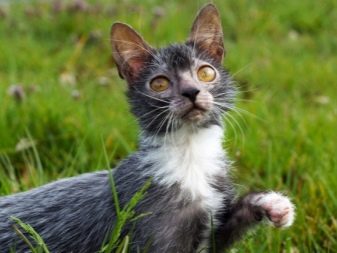
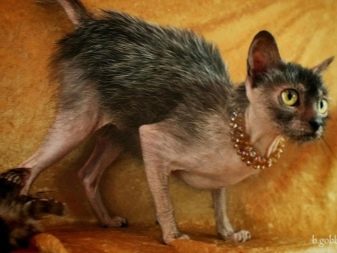
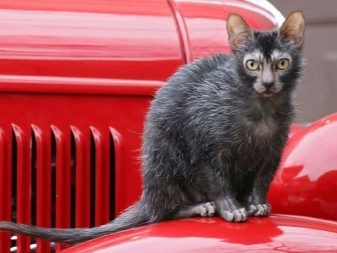

Origin history
There are several versions of the origin of cats of the face breed. The first option is the appearance of animals with such unusual external data as a result of crossing the sphinx and the American Shorthair. In this case, the breeders planned to get offspring without hair, while the kittens were born partially covered with short hair, which was considered an anomaly of development. However, the animals not only survived, but also perfectly developed and grew.
After analysis, it was found that representatives of the cat family, born by breeding such cats, are distinguished by good health, and the appearance is a consequence of mutations at the gene level. In addition, the tests allowed scientists to establish that animals that were born did not inherit genetic similarities with Devon Rex or Sphynx, but belong to short-haired cats.
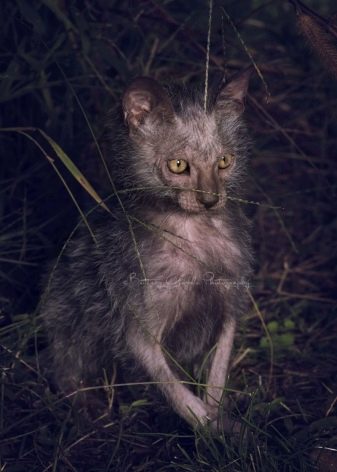
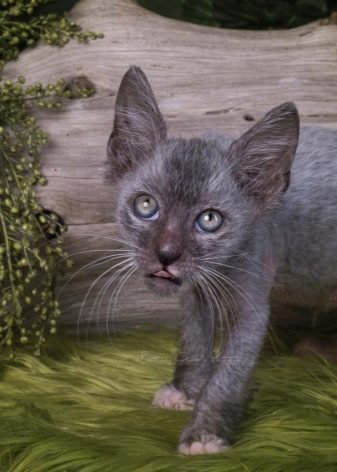
Another version of the emergence of a new breed is considered the story of a resident of Virginia, who had offspring from an ordinary domestic cat with a partial wool coat on her body. After the owner of such unusual tailed cats turned for help to the sphynx breeder, another case of the birth of kittens with such unique external qualities was recorded, but in Tennessee.
Genetic tests have shown that animals from different states have the same recessive gene in which the mutation occurred. It is this fact that has caused cats and cats to have such an exterior. The name of the breed was fixed thanks to the owner of the cats. And further work of scientists with a breed of werewolf animals allowed them to fix all the signs of this species.
In 2012, a standard for lycoys was developed, which was adopted by most world organizations, in light of which the breed began to gain popularity among cat breeders around the world.
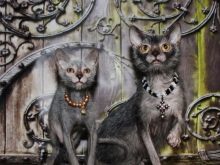
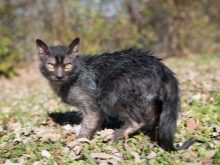
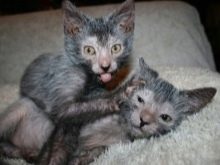
Description
Faces of animals are significantly different in their external characteristics from the rest of the cat family. There are a number of exterior features.
- Body. The body of the animal is correct, in the light of their size, cats look thin. The muscles of the representatives of this breed are developed evenly, thanks to which the pets demonstrate agility and grace in their movements. The tail is longer than average in length; the end is slightly narrowed. In size, the tail should be smaller than the body.
- Limbs. The paws of cats are set evenly, do not stand out for their length, however, the hind limbs should be slightly shorter than the forelimbs. Wool on the bottom should be absent. The paw pads will be rounded.
- Head. The skull of lycoys has a wedge-shaped shape with rounded edges and an oblong frontal bone, while the head of cats of this breed will slightly exceed the size of the skull of the rest of the cat family. Ears of cat-hounds should have a wide base and pointed ends; ears will be set wide. The eyes are almond-shaped, with a bevel up. A fairly open look is characteristic of animals of this breed. The color of the pupils is predominantly dark, while kittens can be born with an iris painted in yellow.
- Wool. The main characteristic of the exterior of cats of the breed of the face will be their coat. According to the tactile sensations, the fur coat of werewolf cats is quite soft, not distinguished by its density. The length of the villi can vary from short to long. The density of the pile will depend on the season and molt. The undercoat of lycoy is practically absent. Some breeders believe that werewolf cats are hypoallergenic.
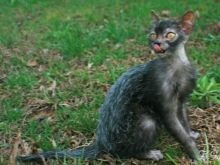
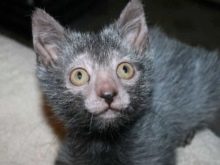

The color of animals is mostly black with gray hair, this color is called roan among specialists. In lycoys, wool is found light at the base, but gray at the end or with a black tip. Cats and cats of this breed are distinguished by good health, as well as stamina.
However, animals are still poorly understood, so it is possible that in the future they may be found to have any congenital diseases.
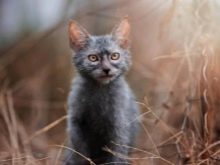

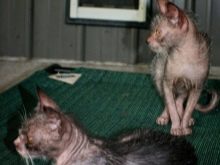
Character Features
In addition to their outstanding appearance, pets are distinguished by highly developed intelligence, as well as initiative and contact. Cats are quite active, willingly play both with a person and without him with different toys. Likoyev can be walked in the fresh air, they will actively explore the territory, if necessary, standing up for its protection from uninvited guests. This character trait is more common in cats.
At home, pets spend most of the day in motion, it is very rare to find a cat that will sleep for almost the whole day. Likoi love to take part in human affairs, are happy to be in the spotlight. Pets quickly get used to their breeder, so they need daily contact with him, as well as new experiences. Strangers may show some caution, however, due to natural curiosity, they can make contact with a new object or object that has appeared in the home.
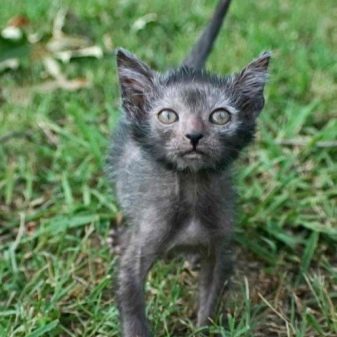
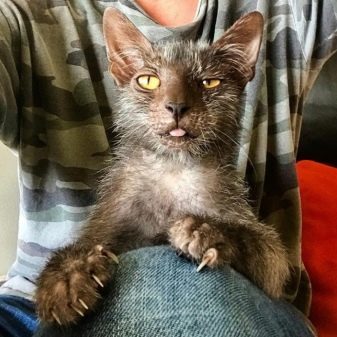
Breeders of the faces note that cats very often spend time in a gopher pose, and they also actively use the forelimbs in the game.Cats and cats are not devoid of hunting instincts, so they can demonstrate them in the house and beyond. On walks they can play and catch small insects, they are extremely rarely interested in larger prey. Walking animals is recommended on a leash.
Werewolf cats are endowed with the instinct of a defender, so they are able at some moments to demonstrate their guardianship in relation to all members of their family. In some cases, pets come into conflict even with large animals when they feel the need to defend their interests and protect the breeder.
In the light of such features of unusual in appearance pets, it is worth considering in advance the number of animals living in the same house with the face.
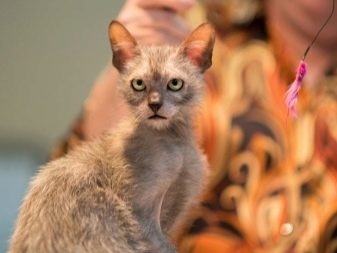
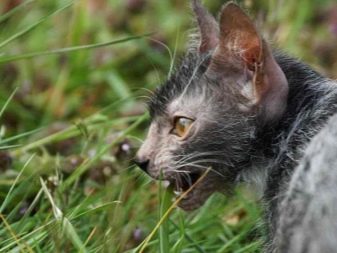
Conditions of detention
In light of the exterior features of the pets of this breed, keeping such cats will require some knowledge and skills from the breeder. The focus will be on grooming animals. Likoi are prone to frequent molting, so in the home it will be necessary to carry out cleaning and cleaning of soft surfaces, where the cat spends time. The animals will need to be combed regularly, for these purposes it is recommended to use a soft brush, so as not to damage the sensitive skin of the pet.
Often there will be no need to bathe lycoys, you can limit yourself to wiping the bald parts of the animal’s body with a damp rag. After such hygienic procedures, the cat needs to be wrapped in a towel, as pets can become cold and sick. Particular attention from breeders will require the eyes and ears of cats. They must be cleaned with moist cotton pads. In order to avoid the development of any disease, in cats and cats, the accumulating secret in the corners of the eyes should be removed daily. There should be no sulfur or other contaminants in the ears.
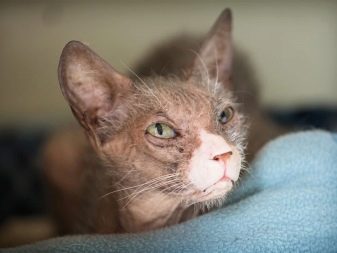
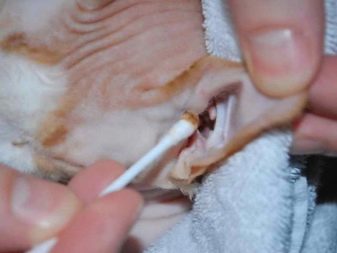
A peculiarity of the breed is the accumulation of brown secretion in the area of the claws, so the pet's limbs must be regularly examined, clipped, without touching the living part of the nail. In the light of the unusual type of hair of cats, they are extremely sensitive to high and low temperatures, therefore In winter, pets are recommended to be additionally insulated with clothing for cats, and in the summer they should be protected as much as possible from direct sunlight, which can lead to burns, on the epidermis.
For active pastime in the home, it is best for people who want to install a game complex at home, as well as purchase several toys. For adult cats, you can buy a regular tray, but for kittens of this breed it is more correct to choose the option with low sides, so that it is easier for the animal to get into it. As the animal grows, its size gradually increases.
As fillers, the use of products for shorthair cats is allowed. It can be wood, silica gel or mineral composition.
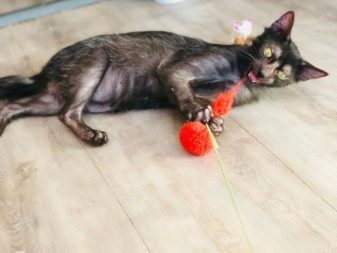
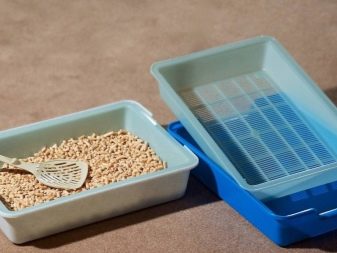
Like any other pet, cats need routine vaccinations, as well as preventive treatment for parasites. As a rule, these externally exotic representatives of the feline family do not show any allergic reactions to the vaccine or hygiene products. Animals are not allergic to food. The kitten should receive the first vaccination at the age of 2-3 months. Scheduled deworming is carried out at least once every 3-4 months, face treatment of ectoparasites will be needed every 6 months. Animals of this breed with proper care and a good diet are able to live with the breeder for more than 10 years.
If the breeder does not plan to further cultivate lycoys, it is best to castrate or sterilize your pet. Cats are usually sent for surgery when they reach 7-12 months, however, in this matter it is better to rely on the opinion of the veterinarian. As for the males, they are usually castrated at the age of 10 months to two years.
In most cases, young cats and cats are easier to tolerate and recover from.
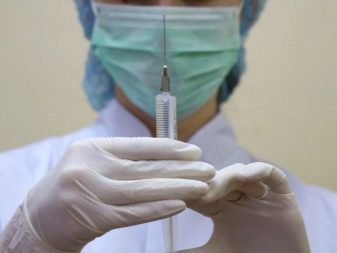
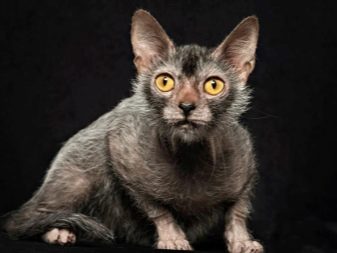
Feeding
When compiling a ration for lycoys, you should adhere to several fundamental rules. It is not recommended to overfeed your cat. And for the menu of an exotic animal, it is necessary to select only high-quality feed containing in its composition a maximum of vitamins and nutrients. For animals, face breeds are advised to give preference to industrial feed. The priority will be wet feed, but dry species are allowed. As for the class of purchased products, it should not be lower than super-premium.
In a natural menu, the breeder will need to additionally introduce vitamin complexes. Some breeders note that when keeping cats on ordinary food, they can sort out the proposed food. Cats should have meat and fish, fermented milk products, vegetables and cereals in their diets. The number of meals per day will depend on the age of the cat. So, for kittens of a breed of a face at the age from 2 to 4 months it is recommended to make the menu with 6 single meals.
With each month, the number of receptions is recommended to be reduced by one time, so that by the year the cat ate 3 times a day.
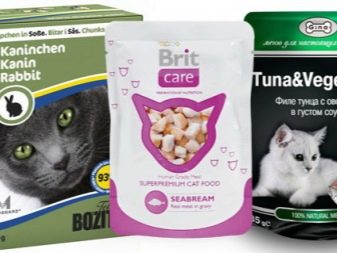

Adult animals are allowed to feed twice a day - in the morning and in the evening. If the pet eats natural food, then with special care he should be offered fresh milk. Breeders recommend entering it on the menu no earlier than 6 months, so as not to cause disturbances in the digestive system. For faces, it will be mandatory to include boiled eggs, low-fat types of meat in the diet, you can offer your pet fruits other than citrus and exotic fruits.
Due to the increased heat exchange, it is recommended that animals give portions slightly larger in volume than cats and cats of other breeds. Among the prohibited foods, it is necessary to highlight:
- spices and nuts in any form;
- mushrooms;
- fatty meats, especially pork;
- legumes;
- confectionery;
- smoked meats;
- bones from birds and fish.


The presence of fresh drinking water in an animal is a must.
Breeding
If you have one or two heterosexual pets of this breed, you can take advantage of a unique case and try to independently produce offspring of these interesting cats. Today lycoys can be found far from every kennel, and the growing demand for pets with a similar appearance can bring tangible benefits to the owner in the future.
However, the primary task in this case will be membership in a specialized club of breeders. The next step is the participation of animals, which are planned to be used for breeding, in various exhibitions. This point is necessary for the cat or cat to be officially approved for breeding. If there is only one face, he needs to choose the appropriate pair. It is important that this animal also has a membership in the club and participate in exhibitions.
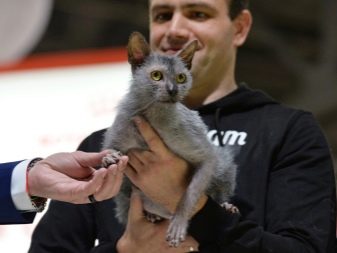
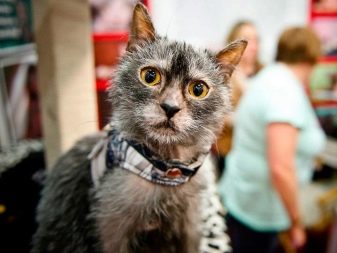
There are a number of requirements that a partner / partner must meet.
- The main issue is the state of health of the animal. It should not have birth defects, as well as external deviations from breed standards.
- The best option would be faces having a pedigree. In this case, you can be sure of the thoroughbredness of the selected animal.
- Usually, a cat contract is made between cat breeders before breeding. It is necessary to spell out all the conditions, as well as rights to future kittens.
Cats are not recommended for mating in their first heat.. As practice shows, the probability of reproducing healthy kittens will be higher if you miss at least two estruses in the animal.
The optimal age for the cat’s pregnancy will be one year. As for cats, they can be allowed to mating at the age of 13-14 months.
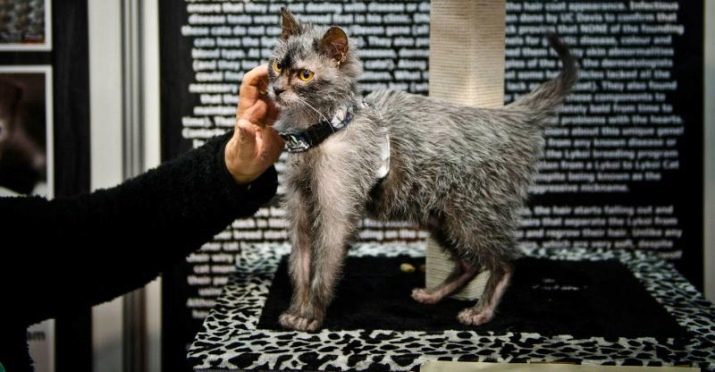
From a physiological point of view, a healthy cat is able to give birth up to five times in one year. But this option is stressful and exhausting for the animal’s body, which can adversely affect the health of the offspring, as well as reduce the life expectancy of the mother. After each birth, the pet needs to be given time to recover.
It is recommended to invite a veterinarian to the first birth of a young animal. Immediately after them, the doctor will be able to objectively assess the condition of the cat and offspring, and also exclude the likelihood of developing such serious ailments as mastitis, uterine inflammation, etc. In the presence of any complications, the next birth in cats should occur after at least a year has passed.
As a rule, breeders are of the opinion that it is not recommended to give birth to a face cat over 3 times in 2 years.
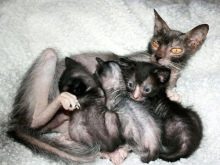
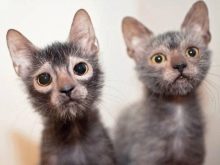
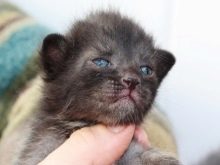
See more about the features of cats with faces in the next video.


































